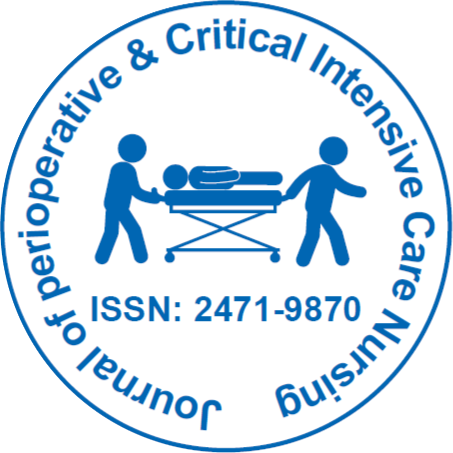
Journal of Perioperative & Critical Intensive Care Nursing
Open Access
ISSN: 2471-9870

ISSN: 2471-9870
Opinion Article - (2023)Volume 9, Issue 4
In the dynamic and often hectic world of critical care, the focus on comprehensive patient well-being can sometimes overlook an essential aspect eye health. It aims to shed light on the importance of encouraging and maintaining optimal eye health in the critical care environment, emphasizing the role it plays in the overall recovery and comfort of patients.
The critical care environment
Critical care units are synonymous with constant monitoring, life-saving interventions, and a whirlwind of activity. Amidst the hustle, the significance of eye health might be inadvertently overlooked. Patients in critical care are prone to a range of challenges, from prolonged bed rest to exposure to various medications, all of which can impact their ocular health.
Ocular risks in critical care: Extended periods of lying in a supine position can lead to dry eyes and discomfort. Moreover, critically ill patients may experience altered tear production and an increased risk of infection due to compromised immune function. Medications, particularly those administered intravenously, may also have side effects that affect vision. These factors collectively highlight the vulnerability of a patient's eyesight in the critical care environment.
Regular eye assessments: Incorporating routine eye assessments into critical care protocols is crucial. Periodic evaluations can help identify early signs of discomfort, dryness, or potential issues, enabling prompt intervention.
Moisture management: Critical care staff should prioritize measures to address dry eyes. This may involve using lubricating eye drops or ointments to maintain moisture and prevent irritation.
Positioning considerations: Conscious efforts should be made to alter patients' positions regularly to mitigate the effects of prolonged supine positioning. This can reduce the risk of eyerelated complications associated with immobility.
Lighting control: Controlling lighting conditions in critical care units is essential for eye comfort. Dimmable lights and adjustable settings can be beneficial, allowing healthcare providers to tailor the lighting environment to each patient's needs.
Minimizing eye strain: Patients in critical care often spend extended periods focusing on fixed points or screens. Encouraging them to blink regularly, practice simple eye exercises, or take short breaks from prolonged screen exposure can help alleviate eye strain.
Communication and education: Transparent communication with patients and their families about the potential effects of critical care on eye health is key. Providing educational materials and guidance on simple eye care practices can patients to take an active role in their ocular well-being.
Collaboration with ophthalmologists
Collaborating with ophthalmologists for regular assessments and interventions can ensure that any emerging eye issues are addressed promptly by specialists.
Incorporating technology safeguards: The use of protective eyewear or screens to minimize exposure to bright lights or harmful rays from medical equipment can be considered. These safeguards can play a role in preventing eye strain and discomfort.
In the fast-paced world of critical care, where every moment is dedicated to saving lives, the importance of eye health should not be underestimated. Encouraging and maintaining optimal eye health in the critical care environment is not just about comfort; it is a vital aspect of holistic patient care. By incorporating simple yet effective strategies, from regular eye assessments to moisture management and patient education, healthcare providers can contribute to the overall well-being of patients in critical care. The clarity of vision is not just a matter of seeing; it is a crucial element toward recovery and enhanced quality of life for those navigating the challenges of critical care.
Citation: Peppas AN (2023) Clear as Glasses and Encouraging Eye Health in the Critical Care Environment. J Perioper Crit Intensive Care Nurs. 9:238.
Received: 13-Nov-2023, Manuscript No. JPCIC-23-28674; Editor assigned: 15-Nov-2023, Pre QC No. JPCIC-23-28674 (PQ); Reviewed: 30-Nov-2023, QC No. JPCIC-23-28674; Revised: 08-Dec-2023, Manuscript No. JPCIC-23-28674 (R);; Published: 15-Dec-2023 , DOI: 10.35248/2471-9870.23.9.238
Copyright: © 2023 Peppas AN. This is an open-access article distributed under the terms of the Creative Commons Attribution License, which permits unrestricted use, distribution, and reproduction in any medium, provided the original author and source are credited.